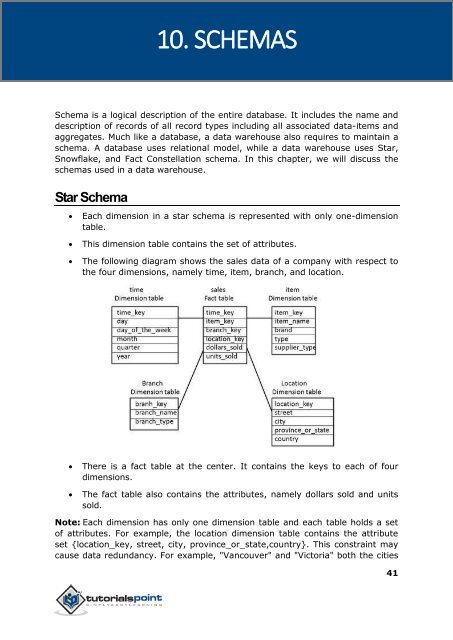dwh_tutorial
You also want an ePaper? Increase the reach of your titles
YUMPU automatically turns print PDFs into web optimized ePapers that Google loves.
10. SCHEMAS<br />
DWH<br />
Schema is a logical description of the entire database. It includes the name and<br />
description of records of all record types including all associated data-items and<br />
aggregates. Much like a database, a data warehouse also requires to maintain a<br />
schema. A database uses relational model, while a data warehouse uses Star,<br />
Snowflake, and Fact Constellation schema. In this chapter, we will discuss the<br />
schemas used in a data warehouse.<br />
Star Schema<br />
<br />
Each dimension in a star schema is represented with only one-dimension<br />
table.<br />
<br />
<br />
This dimension table contains the set of attributes.<br />
The following diagram shows the sales data of a company with respect to<br />
the four dimensions, namely time, item, branch, and location.<br />
<br />
<br />
There is a fact table at the center. It contains the keys to each of four<br />
dimensions.<br />
The fact table also contains the attributes, namely dollars sold and units<br />
sold.<br />
Note: Each dimension has only one dimension table and each table holds a set<br />
of attributes. For example, the location dimension table contains the attribute<br />
set {location_key, street, city, province_or_state,country}. This constraint may<br />
cause data redundancy. For example, "Vancouver" and "Victoria" both the cities<br />
41


